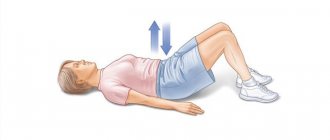What is Nebilet?
Nebilet is a drug used in cardiology as an antihypertensive agent that is used to treat hypertensive heart disease (high blood pressure). Its active ingredient is nebivolol. It is a selective beta-blocker, that is, it blocks β1 receptors that are located in the heart muscle (myocardium) due to which it has such effects as hypotonic (lowers blood pressure), antianginal (reduces the frequency and strength of heart contractions, and also reduces the myocardial oxygen demand), antiarrhythmic (slows down the conduction of impulses through the autonomic system of the heart).
Due to its pharmacological properties, Nebilet can also be used to treat diseases such as:
- in combination therapy of chronic heart failure (CHF);
- coronary heart disease (CHD);
- for the purpose of preventing attacks of angina pectoris (retrosternal pain radiating (radiating) to the left side of the body).
What you need to know before you start taking Nebilet
If you have increased sensitivity to Nebilet, which manifests itself in the form of an allergic reaction, then you should stop taking it, and it is also prohibited to take it if you have the following conditions:
- acute heart failure;
- atrioventricular block (lack of impulse conduction between the chambers of the heart);
- sinus node dysfunction;
- very slow heartbeat;
- severe liver disease;
- if your heart can't pump blood properly.
It is also necessary to take Nebilet with extreme caution as prescribed by a doctor if you have ever had or have a history of the following conditions:
- bronchial asthma, bronchitis, emphysema (increased air content in the lung tissue);
- heart attack;
- circulation problems (especially in the feet and legs);
- diabetes (taking Nebilet may make it difficult to detect low blood sugar);
- thyroid disease;
- liver or kidney disease;
- pheochromocytoma (tumor of the adrenal gland).
If you need surgery, tell the surgeon in advance that you are taking Nebilet, as if taken simultaneously with general anesthesia, this can lead to severe cardiac tachycardia.
If you are pregnant or planning to become pregnant, you should consult your doctor before taking Nebilet because it is not known whether this drug will harm an unborn baby.
Be careful!
High blood pressure during pregnancy can cause complications such as diabetes or eclampsia (dangerously high blood pressure that can lead to health problems for both mother and baby). The benefits of treating hypertension may outweigh any risks to the child.
Breastfeeding is prohibited if you are being treated with Nebilet.
Nebilet is approved for use only by people over 18 years of age.
Contraindications to the use of the drug Nebilet
Hypersensitivity to nebivolol or any component of the drug. Liver failure or impaired liver function. During pregnancy and breastfeeding. β-adrenergic receptor blockers are contraindicated in cardiogenic shock, decompensated heart failure, sick sinus syndrome, AV block II and III degrees, asthma and bronchospasm in history, untreated pheochromocytoma, metabolic acidosis, bradycardia (heart rate ≤50 beats/min), arterial hypotension, severe forms of peripheral circulatory disorders.
How to take Nebilet?
Nebilet should be prescribed by a doctor based on your individual characteristics. The doctor will select a specific dose for you, which may be adjusted from time to time.
Note!
When using the drug Nebilet, you should not skip doses, independently reduce or increase the dose or abruptly stop taking this drug, and you also need to systematically monitor your blood pressure using a tonometer.
Nebilet should be taken regularly in the dosage prescribed by your doctor. This medicine can be used with or without food. Even if you feel well, you still should not skip Nebilet doses, since hypertension is often asymptomatic.
As a rule, Nebilet is taken orally (by mouth) 1 time per day, starting with the lowest effective dose, trying to take the medicine at the same time.
Pharmacological properties of the drug Nebilet
Pharmacodynamics. Nebivolol is a racemate consisting of two enantiomers: SRRR-nebivolol (or D-nebivolol) and RSSS-nebivolol (or L-nebivolol). It combines two pharmacological properties:
- due to its D-enantiomer, nebivolol is a competitive and selective β1-adrenergic receptor blocker;
- Thanks to its L-enantiomer, it has a mild vasodilator effect due to metabolic interaction with L-arginine/nitric oxide (NO).
With single and repeated use of nebivolol, heart rate at rest and during exercise decreases in both individuals with normal blood pressure and in patients with hypertension (arterial hypertension). The hypotensive effect persists with long-term treatment. At therapeutic doses, α-adrenergic antagonism does not develop. Nebivolol does not have sympathomimetic activity. In therapeutic doses it does not have membrane stabilizing activity. In healthy probands, nebivolol does not have a significant effect on exercise tolerance. Pharmacokinetics . After oral administration, both enantiomers of nebivolol are rapidly absorbed from the digestive tract. Eating does not affect the absorption of the drug. Metabolized in the body to form active hydroxymetabolites. The bioavailability of orally administered nebivolol averages 12% in individuals who metabolize the drug rapidly and is almost complete in individuals who metabolize the drug slowly. Based on the different rates of metabolization, dosing of Nebilet should be carried out taking into account the individual characteristics of the patient. When steady state is achieved using equal doses of the drug, the maximum concentration of unchanged nebivolol in slow metabolizers is approximately 23 times higher than in fast metabolizers; Taking this into account, people with slow metabolism are prescribed the drug in lower doses. In fast metabolizers, the half-life of nebivolol enantiomers averages 10 hours; in slow metabolizers, the half-life is 3–5 times longer. Plasma concentrations range from 1 to 30 mg of nebivolol and are proportional to the dose. The patient's age does not affect the pharmacokinetics of nebivolol.
Directions for use and dosage Nebilet
Dosage for arterial hypertension and coronary heart disease.
Initial dose: 2.5 mg, that is, half a 5 mg tablet once a day.
Further, as prescribed by the doctor, if necessary, the dose can be increased to 5 mg (1 tablet) per day, or 10 mg (2 tablets at a time) per day.
Dosage for complex treatment of chronic heart failure.
When treating this disease, the dose should be increased gradually if necessary.
Initial dose: 1.25 mg (quarter of a 5 mg tablet) once daily.
Subsequently, the doctor may increase the dose to 2.5 mg/day, 5 mg/day and 10 mg/day. Depending on the tolerability of a particular dose, it will be possible to remain at the optimal dosage, which will be different for each patient.
The maximum dose taken per day should not exceed 10 mg.
Nebilet drug overdose, symptoms and treatment
Symptoms of overdose with beta-adrenergic blockers: bradycardia, hypotension, bronchospasm and acute heart failure. In case of overdose or the development of a hyperergic reaction, the patient should be constantly monitored and given intensive medical care. It is recommended to monitor blood glucose levels. Absorption of the active substance, which is still contained in the gastrointestinal tract, can be prevented by gastric lavage, the use of activated charcoal and laxatives. In more severe cases - mechanical ventilation. To eliminate bradycardia, administration of atropine or methylatropine is recommended. Hypotension and shock should be treated with IV blood plasma or plasma expanders and, if necessary, catecholamines (the β-blocking effect can be reversed by slow IV administration of isoprenaline hydrochloride, starting at a dose of 2.5 mcg/min and up to achieving the expected effect). If you are unresponsive, isoprenaline can be combined with dopamine. In case of ineffectiveness, use intravenous administration of 50–100 mcg/kg glucagon. If necessary, the injection should be repeated within 1 hour and then an intravenous drip infusion of glucagon should be performed at a rate of 70 mcg/kg/hour. In severe cases, such as bradycardia that is resistant to therapy, a pacemaker can be used.
What should you not do while taking Nebilet?
If your doctor has prescribed you treatment with Nebilet, abrupt withdrawal of the drug is strictly prohibited - this can lead to serious heart problems, including a heart attack.
It is advisable to exercise extreme caution when engaging in activities that require high concentration or driving a car, as Nebilet may affect the speed of your psychomotor reactions due to its frequent side effects, such as dizziness, headache and fatigue.
Drug interactions Nebilet
β-adrenergic receptor blockers have certain interactions in common. Calcium antagonists. When combining β-adrenergic receptor blockers with calcium antagonists such as verapamil and diltiazem, caution must be exercised due to their negative inotropic effect and effect on AV conduction. In patients taking Nebilet, intravenous administration of verapamil is contraindicated. Antiarrhythmic drugs. Caution should be exercised when combining β-adrenergic receptor blockers with class I–III antiarrhythmic drugs and amiodarone due to the likely increase in their negative effect on intra-atrial and AV conduction and the development of a negative inotropic effect. Clonidine. If long-term therapy with clonidine is suddenly stopped, β-adrenergic blockers increase the risk of developing a withdrawal syndrome with increased blood pressure, so clonidine should be discontinued gradually. Foxglove preparations . Digitalis glycosides in combination with beta-adrenergic blockers may slow AV conduction. Clinical studies of nebivolol did not reveal this interaction. Nebivolol does not affect the kinetics of digoxin. Insulin and oral hypoglycemic agents. Although Nebilet does not affect blood glucose levels, it may mask some symptoms of hypoglycemia, such as tachycardia. Anesthetic agents. The simultaneous use of beta-adrenergic blockers and anesthetics may inhibit reflex tachycardia and increase the risk of hypotension. The anesthesiologist should be informed that the patient is taking Nebilet. Other. The combined use of nebivolol with NSAIDs does not affect its antihypertensive effect. With simultaneous use of cimetidine, the level of nebivolol in the blood plasma increased without changing clinical activity. The combined use of ranitidine had no effect on the pharmacokinetics of nebivolol. Provided that Nebilet is taken with meals and the antacid is taken between meals, both drugs can be taken in combination. When combined with nicardipine, the plasma concentrations of both substances slightly increased without changing clinical activity. Concomitant use of furosemide and hydrochlorothiazide, as well as alcohol consumption, does not affect pharmacokinetics. Nebivolol has no effect on the pharmacodynamics and pharmacokinetics of warfarin. Sympathomimetic agents may decrease the activity of beta-blockers when used concomitantly. The use of β-adrenergic receptor blockers can lead to unimpeded α-adrenergic activity of sympathotonic drugs with both α-adrenergic and β-adrenergic effects (risk of developing hypertension, severe bradycardia, AV block). The simultaneous use of tricyclic antidepressants, barbiturates and phenothiazine derivatives may enhance the hypotensive effect. Since the CYP2D6 isoenzyme is involved in the metabolism of nebivolol, concomitant drug treatment with drugs that inhibit serotonin reuptake, such as dextromethorphan or other compounds that are metabolized predominantly through the same metabolic pathway, may contribute to the fact that the reaction of fast and slow metabolizers may become the same. There are no data on the interaction of nebivolol with allergens used for the diagnosis and treatment of allergic reactions. There is also no data on the interaction of nebivolol with radiocontrast agents and MAO inhibitors.
What are the side effects of Nebilet?
Among the main side effects that may occur while taking this medication are the following:
- dizziness;
- swelling of the lower extremities;
- slow heartbeat;
- fatigue;
- headache.
This list is incomplete; other side effects may occur after taking the drug Nebilet, but they are less rare. To obtain detailed information, you must contact a medical professional.
Symptoms of Nebilet overdose
If the attending physician or the instructions for the drug Nebilet do not take it in accordance with the dosages indicated, symptoms of an overdose of this medicine may appear, including:
- absence or decrease in body movements;
- unsteadiness and dizziness with a feeling of loss of consciousness;
- anxiety;
- numbness of lips, legs, or skin;
- blue discoloration of the skin (cyanosis);
- blurred vision;
- chills;
- cold sweat and cool, pale skin;
- cough;
- decreased diuresis (volume of urine);
- dilated veins of the neck;
- dry mouth;
- very tired;
- irregular heartbeat, sometimes fast, sometimes slow;
- increased sweating;
- thirst;
- irregular, fast, slow, shallow, or labored breathing;
- loss of appetite;
- mood changes;
- muscle pain or cramps;
- nausea and/or vomiting;
- nervousness;
- slurred speech;
- weight gain.
If you experience symptoms of an overdose of this medication, you should immediately contact an ambulance for symptomatic treatment of the conditions that have arisen.
Consequences of an overdose of Nebilet
Any symptoms of an overdose of Nebilet can cause complications and corresponding consequences for the body:
- a sharp drop in blood pressure (orthostatic hypotension);
- narrowing of the lumen of the bronchi vessels, which can lead to suffocation (bronchospasm);
- interruptions in the conduction of impulses from the atria to the ventricles of the heart (atrioventricular block);
- a sharp decrease in contraction of the heart muscle (ventricular failure);
- coma;
- heart failure.
It is strictly forbidden to exceed the maximum daily dose of Nebilet, because many conditions that arise from its overdose can become irreversible and without the possibility of saving the patient’s life.
Use of Nebilet during breastfeeding and effects on infants
It has been proven that Nebilet penetrates into mother's breast milk and also has high binding to blood proteins, which in turn leads to high cumulation (accumulation) of this drug in the body and, accordingly, to its toxic effect on the infant.
Therefore, women during lactation are prohibited from taking the drug Nebilet, however, if such use is necessary, as determined by the doctor, breastfeeding should be stopped. Sources
- Nebivolol Pregnancy and Breastfeeding Warnings / Drugs.com (English)
- Nebivolol / BUMPS (English)
- Effect of nebivolol treatment during pregnancy on the intrauterine fetal growth, mortality and pup postnatal development in the l-NAME-induced hypertensive rats / NIH (English)
- Nebivolol use while Breastfeeding / Drugs.com (English)
- Hypoglycemia, polycythemia and hyponatremia in a newborn exposed to nebivolol during pregnancy / PubMed (English)
- Effect of nebivolol treatment during pregnancy on the genital circulation, fetal growth and postnatal development in the Wistar rat / PubMed (English)
- Rational control of arterial pressure during labor in women with arterial hypertension / National Library of Medicine (English)
Interaction of Nebilet with other drugs and substances
Sometimes it is unsafe to take Nebilet at the same time as other groups of medications. Some medications can affect its concentration level in the blood, as a result of which side effects may increase or the therapeutic effect of Nebilet will be significantly reduced.
Nebilet interacts with drugs such as:
- any other drugs from the group of antihypertensive drugs - the therapeutic effects of Nebilet are enhanced;
- cardiac glycosides (cardiotonic drugs) - increases the risk of negative effects on the heart;
- Cimetidine (an allergy medicine) increases plasma concentrations of Nebilet;
- antiarrhythmic drugs - the regular heart rhythm is lost;
- antianginal drugs and antidepressants - the effect of hypotension is enhanced.
Not all Nebilet interactions may be presented here. For more accurate information, it is recommended to consult your doctor.
Nebilet®
Discontinuation of therapy or “withdrawal syndrome”
Treatment with nebivolol should not be abruptly interrupted unless absolutely necessary. Particular caution should be exercised when it is necessary to discontinue therapy in patients with coronary artery disease, because Worsening of angina attacks, the development of myocardial infarction and the occurrence of ventricular arrhythmias in patients with coronary artery disease with sudden cessation of beta-blockers were noted. If discontinuation of treatment is necessary, the dose of nebivolol should be reduced gradually over 1-2 weeks. In case of significant worsening of angina or development of acute coronary syndrome, nebivolol should be temporarily resumed.
Diseases of the cardiovascular system
Monitoring blood pressure and heart rate at the beginning of taking the drug should be daily. Like other beta blockers, nebivolol may cause a prolongation of the PQ interval on the ECG. Nebivolol should be used with caution in patients with 1st degree atrioventricular block, cardiac conduction disorders, and a history of syncope. The simultaneous use of nebivolol with drugs that can prolong the PQ interval on the ECG is possible only if the expected benefit to the patient outweighs the possible risk of developing or worsening cardiac conduction disorders.
Vasospastic angina (Prinzmetal angina)
Non-selective beta-blockers may increase the frequency and duration of anginal attacks in patients with vasospastic angina (Prinzmetal's angina), due to alpha-receptor-mediated vasoconstriction of the coronary artery. Cardioselective beta-blockers should be used with caution in vasospastic angina.
Bradycardia
Beta blockers may cause bradycardia. If the resting heart rate decreases to less than 50-55 beats/min, the dose should be reduced or discontinued taking nebivolol.
Peripheral vascular diseases
Caution is required when using nebivolol in patients with peripheral vascular disease (including Raynaud's syndrome), since beta-blockers may increase symptoms of arterial insufficiency.
Decompensated CHF
Beta blockers should not be used for decompensated CHF until the patient's condition has stabilized. Nebivolol can be used for the treatment of stable mild to moderate CHF concomitantly with thiazide diuretics, digoxin, ACE inhibitors or angiotensin II receptor antagonists (ARA II).
Chronic obstructive pulmonary disease (COPD)
Patients with bronchospastic diseases can be prescribed cardioselective beta-blockers in case of intolerance and/or ineffectiveness of other antihypertensive drugs.
Beta blockers should be used with caution in patients with chronic obstructive pulmonary disease, as bronchospasm may increase. Patients with a predisposition to bronchospasm may develop shortness of breath when taking beta-blockers as a result of increased airway resistance. Careful monitoring of such patients is necessary at the beginning of treatment and when increasing the dose of the drug, as well as reducing the dose of nebivolol when initial signs of bronchospasm appear. Before starting treatment, it is recommended to conduct a respiratory function test in patients with a history of bronchopulmonary diseases.
The effectiveness of beta-blockers is lower in smokers than in non-smokers.
Diabetes
Nebivolol does not affect plasma glucose concentrations in patients with diabetes mellitus. However, caution should be exercised when treating these patients because nebivolol may mask certain symptoms of hypoglycemia (eg, tachycardia) caused by the use of oral hypoglycemic agents and insulin.
In patients with unstable diabetes mellitus and a history of episodes of spontaneous hypoglycemia, the use of beta-blockers may lead to worsening glycemic control and an increase in recovery time from hypoglycemia. In this case, dose adjustment of oral hypoglycemic agents and insulin may be necessary. This effect has generally occurred during treatment with non-selective beta-blockers and is less likely to occur with cardioselective beta-blockers (such as nebivolol).
Thyrotoxicosis
With hyperfunction of the thyroid gland, beta-blockers can mask tachycardia and reduce the severity of symptoms of thyrotoxicosis. Abrupt withdrawal of the drug can cause exacerbation of symptoms of the disease and the development of thyrotoxic crisis.
Pheochromocytoma
Patients with pheochromocytoma should be given an alpha blocker before starting any beta blocker (including nebivolol).
General surgery and general anesthesia
If surgical interventions are necessary, the anesthesiologist should be warned that the patient is taking beta-blockers (risk of drug interactions with the development of bradyarrhythmias and arterial hypotension). While taking nebivolol, one should use anesthetics that inhibit myocardial contractility with caution. For general anesthesia, it is recommended to use drugs with minimal negative inotropic effects.
It is recommended not to stop taking nebivolol in the perioperative period unless clearly necessary (since beta-adrenergic receptor blockade reduces the risk of arrhythmias during induction of anesthesia and tracheal intubation). If it is necessary to interrupt treatment with nebivolol before surgery, the drug should be discontinued at least 24 hours before surgery.
Hypersensitivity reactions
Beta blockers may increase sensitivity to allergens and the severity of anaphylactic/hypersensitivity reactions. The use of usual therapeutic doses of epinephrine (adrenaline) while taking beta-blockers does not always lead to achieving the desired clinical effect. Therefore, caution should be exercised when prescribing beta-blockers to patients with a history of severe hypersensitivity reactions or undergoing desensitization.
Psoriasis
When deciding on the use of nebivolol in patients with psoriasis, the expected benefits of the drug should be carefully weighed against the possible risk of exacerbation of psoriasis.
Contact lenses
Patients who use contact lenses should take into account that the use of beta-blockers may reduce the production of tear fluid. Preclinical studies using standard techniques did not reveal genotoxic or carcinogenic effects in humans.








